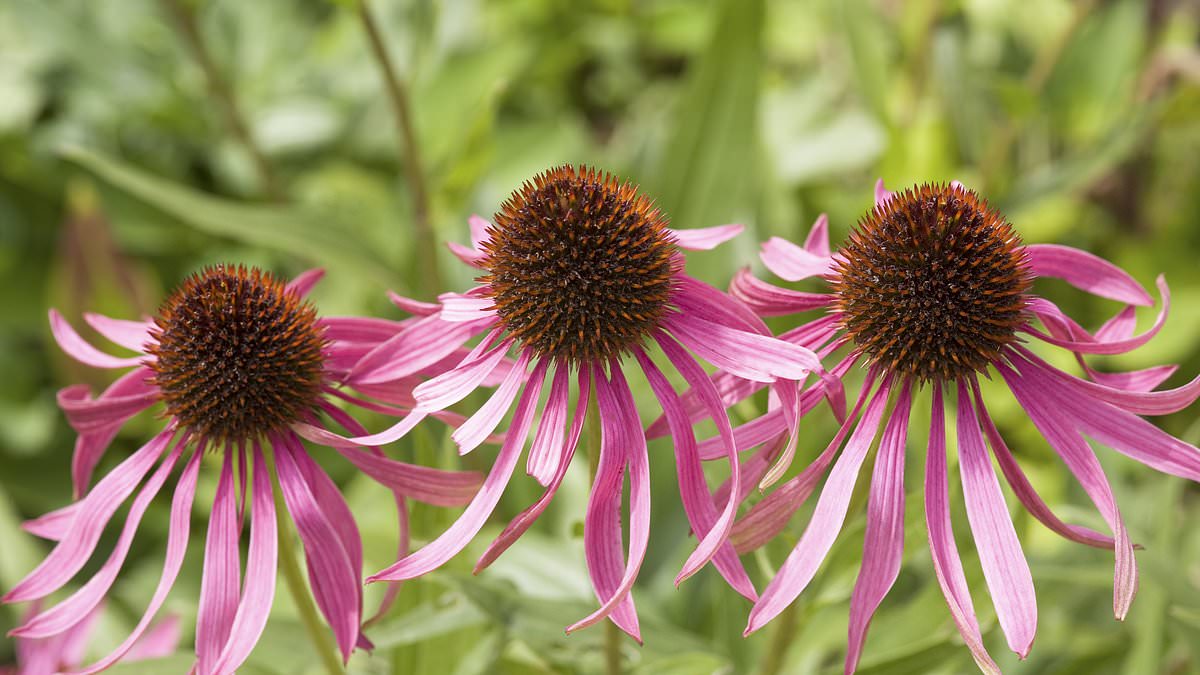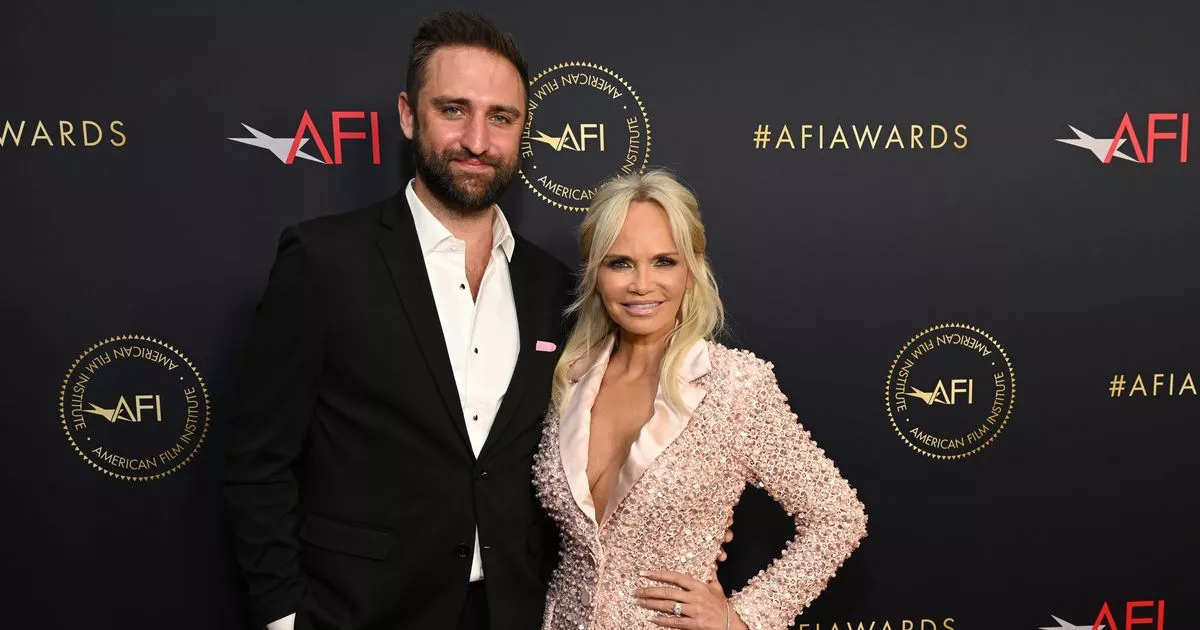DRIFT INTO AUTUMN: Swathes of late perennials will give gardens a natural look
- Early autumn is when ‘new perennials’ come into their own
- READ MORE: Our long wet summer means it’s party time for hydrangeas
September is a lovely month in the garden, bringing a painter’s palette of late-season perennials.
It’s also a great opportunity to get planting, with bargains to be had as nurseries come to the end of their summer stock.
Early autumn is when ‘new perennials’ come into their own.
This style of planting, pioneered in the 1980s and 1990s by Dutch landscape designer Piet Oudolf, continues to influence the way we garden today.
It’s the concept of using low-maintenance herbaceous plants in naturalistic drifts, emulating the way flowers might grow in the wild.
Come into their own: Echinacea pallida has slender, delicate petals in softest pink
Plants are selected for how they suit the environment. This doesn’t mean they have to be native, but they adapt well to their growing conditions without taking over.
SHAPE UP
When choosing late-season perennials, think about shape as well as colour.
Using a variety of forms and textures provides contrast and helps to draw the eye through the garden.
Firstly, you have the daisy shapes. Echinacea, or coneflowers, look like a child’s drawing of a flower, with long curved petals coming off a plump centre.
They bloom from mid-summer until early autumn in pink, white, red, and orange.
E. pallida is wild-looking and tall, growing up to 1.2m, with a brown cone and slender pale pink petals, while E. purpurea ‘White Swan’ has pure white florets.
Rudbeckia, or Black-eyed Susans, range from yellow and orange to dark red, providing a blaze of colour. They prefer full sun and moist but well-drained soil.
R. fulgida ‘Goldsturm’ is one of the best, growing to 1m tall.
Asters, or Michaelmas daisies, also known as Symphyotrichum, don’t mind partial shade and are great for a last blast of colour.
A.frikartii ‘Mönch’ has bright lavender-blue flowers, while the New England aster ‘Violetta’ is a lovely darker purple.
DREAMY SPIRES
Next, you have the spires: Salvias have been going strong since early summer with a long flowering season that should see them into mid-autumn. They combine well with grasses.
Salvia ‘Nachtvlinder’ is a deep maroon, while S. ‘Amistad’ is a rich violet.
Bugbane, or Actaea simplex, has luminous candle -like fragrant white flowers and a wonderful winter silhouette.
‘Brunette’ is an attractive cultivar. And Persicaria amplexicaulis is good for a damp, shady spot. Try magenta pink ‘September Spires’.
Then, come the buttons, with their bobbing panicles. Scabious, or Knautia macedonica, has small crimson flowers on thin stems giving it a light airy appear- ance.
The blooms of Sanguisorba look like little pink bottle brushes, with leaves that turn an attractive rust colour in autumn.
Finally, the flatheads including sedums, with large, fleshy leaves and reddish stems, which go well with swishy grasses.
Also known as stonecrop, the official name for this group is now Hylotelephium.
‘Autumn Joy’ is a good variety with flowers that start out white and fade to pink.
When deciding what to buy, consider your soil type. Is it shady? In which case the white Japanese anemone ‘Honorine Jobert’ could be a good choice.
Sunny with good drainage? The perfect site for the giant hyssop Agastache ‘Blue Fortune’. Dig a hole the right size to bury just the roots. Once your plant is in, firm around the base and water it well.
Planted now, perennials have time to estab-lish, dying back over winter, before returning with renewed vigour next year.
Source: Read Full Article



